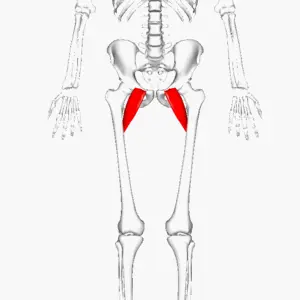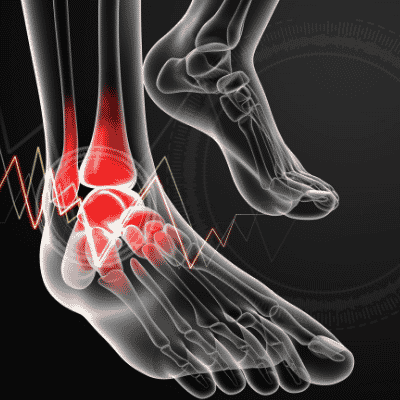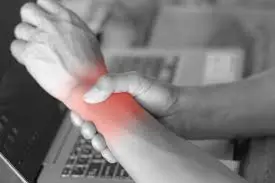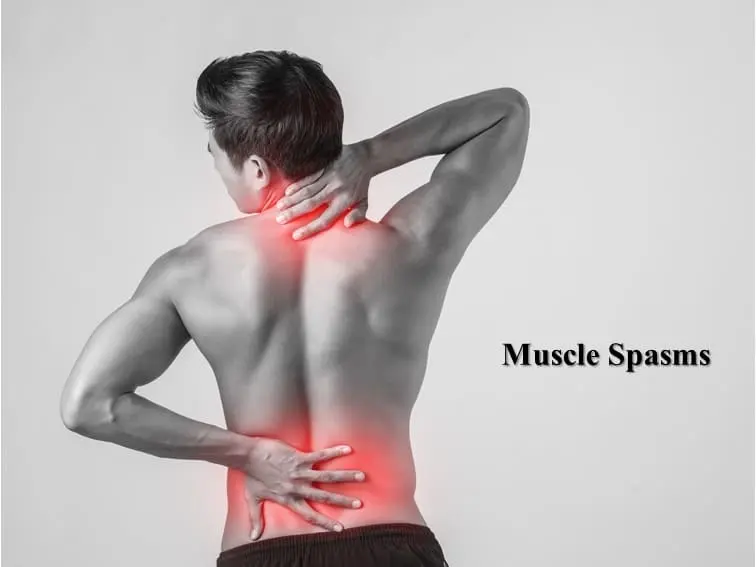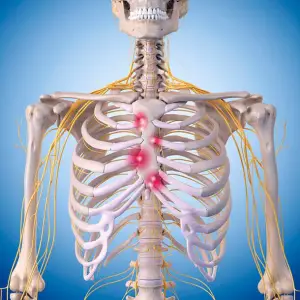Stomach Muscle Soreness
Stomach muscle soreness refers to discomfort or pain in the abdomen muscles. The abdomen may feel sensitive and sore from a torn abdominal muscle, especially when moving.
Stomach muscle soreness can have several reasons. The most common reasons are relatively minor, such as gas discomfort, indigestion, or a torn muscle. Other problems may require immediate medical intervention.
The location and pattern of stomach discomfort can give vital information, but the duration is most useful in determining the reason.
Acute Stomach muscle soreness begins and often resolves within a few hours to a few days. Chronic Stomach muscle soreness might come and go. This sort of discomfort may last for weeks, months, or even years. Some chronic illnesses induce progressive discomfort that gradually worsens over time.
The degree and length of stomach muscle soreness varies according to the underlying cause. Rest, ice, and over-the-counter pain medicine can usually alleviate the ache. However, if the soreness is severe, long-lasting, or accompanied by other symptoms such as fever, nausea, or vomiting, you should consult a doctor to rule out any significant underlying causes.
Stomach (Abdominal) Muscles: Anatomy and its Function
The Stomach (Abdominal) muscles are part of the musculoskeletal system. These muscles in the front of the body, between the pelvis and the ribs, support the trunk (midsection), keep organs in place, and allow you to move.
Your stomach and back muscles are core muscles that support and stabilize your spine. They operate together to assist you sit, standing, walking, and exercising.
The Stomach (Abdominal) consists of several muscle groups:
- Oblique Muscles engage to assist in twisting your body (trunk) left and right.
- Rectus Abdominus muscles are the ones you see in six-pack abs. They facilitate mobility between the rib cage and the pelvis.
- The Transverse Abdominus muscles are the deepest abdominal muscles. They serve to stabilize the trunk and protect the organs.
What is Stomach Muscle Soreness?
- Stomach muscle soreness, also known as abdominal muscular soreness, is a sensation of discomfort or pain in the abdominal muscles.
- It might range from a minor discomfort to a strong, stabbing pain that is localized to one place or more widespread.
What are the causes of Stomach Muscle Soreness?
Stomach muscle soreness refers to discomfort or pain in the abdomen muscles. This can be caused by several factors, including overuse, strain, injury, and underlying medical issues.
There are several possible reasons for stomach muscular discomfort, including:
- Exercises: Overexertion (Intense or excessive exercise)or poor form during exercise can strain or tear the abdominal muscles, resulting in pain. This is especially prevalent in tasks that require twisting, bending, or carrying big things.
- Injuries: A fall, blow to the abdomen, or other accidents such as falls or car crashes can cause abdominal muscle damage, resulting in discomfort and stiffness.
- Medical conditions: Gastritis, ulcers, and irritable bowel syndrome (IBS) can all induce abdominal muscular pain.
Other reasons for stomach muscle discomfort include:
- Dehydration
- Electrolyte abnormalities
- Some drugs.
- Chronic coughing and sneezing.
- Lifting large items.
- Poor form during sports or exercise.
- Sudden twisting.
What are the Symptoms of Stomach Muscle Soreness?
- Pain: The most frequent symptom is pain, which can range from severe to dull, aching, or
- Burning. Coughing, laughing, or twisting may make it worse.
- Tenderness: The region surrounding the aching muscle may be sensitive to the touch.
- Swelling: In certain circumstances, the affected region becomes swollen.
- Difficulty moving: The discomfort may make it difficult for you to move your abdomen or body.
- Muscle spasms: It is involuntary contractions of the muscles that cause discomfort and make movement difficult.
- Bruising: If you damage a muscle, you may see bruising in the affected region.
Weakness: The afflicted muscles may feel weak and challenging to use. - Nausea and vomiting: In certain circumstances, stomach muscle discomfort may be accompanied by nausea and vomiting, particularly if the reason is a digestive problem.
If you are experiencing any of these symptoms, you should see a doctor to rule out any serious underlying conditions.
Diagnosis of Stomach Muscle Soreness
Muscle soreness in the stomach is normally diagnosed using your medical history, a physical examination, and, in certain cases, further testing. Here’s a breakdown of the procedure:
Medical history:
Your doctor will begin by questioning you about your symptoms, which include:
- When did the pain begin?
- The intensity and kind of pain (sharp, dull, agonizing, searing)
- Any actions that cause or worsen the discomfort.
- Other symptoms you’re having (such as fever, nausea, and vomiting)
- Any recent injuries or medical conditions?
Physical examination
- During the physical exam, your doctor will gently palpate your abdomen to detect pain, swelling, or muscular spasms.
- Examine your range of motion and capacity to move your abdomen comfortably.
- Check your abdomen using a stethoscope for any strange noises.
Additional Test:
Your doctor may prescribe further tests based on your symptoms and physical exam results. Examples include:
- Blood tests, To rule out any underlying disorders, such as infections or inflammatory diseases.
- Imaging studies, such as X-rays, ultrasounds, and CT scans, can assist diagnose muscle rips, hernias, and other interior injuries.
- Electromyography (EMG) is a test that monitors your muscle’s electrical activity to diagnose nerve damage.
Treatment for the Stomach Muscle Soreness
- The primary course of action for Stomach Muscle Soreness is to give it time to heal by resting. Any actions that put additional tension on the muscles or create pain should be avoided by people.
- If an individual feels as though they have injured their abdominal muscle while exercising, they should immediately stop and do the following actions:
- Wrap a cold pack with a handkerchief or towel.
- For twenty minutes, put the pack on the abdomen.
- Repeat a couple of times a day.
- To speed up the healing process, a medical practitioner could suggest performing particular stretches. Additionally, over-the-counter painkillers like ibuprofen can be used by people to reduce discomfort and swelling.
- People can use heat to the torn muscle to relax it if there is no edema. For a duration of 10 to 15 minutes, apply a warm compress to the affected area. This can aid in letting the muscle relax and heal.
- To speed up the healing process, a medical practitioner could suggest performing particular stretches. Additionally, over-the-counter painkillers like ibuprofen can be used by people to reduce discomfort and swelling.
- Heat therapy can be used to relieve torn muscles if there is no edema. For a duration of 10 to 15 minutes, apply a warm compress to the affected area. This can aid in letting the muscle relax and heal.
- A doctor will typically manipulate a hernia back into its proper place as part of treatment. However, some people could need surgery.
- The severity of a pulled muscle will determine how quickly it recovers. While a more severely strained muscle may take four to six weeks to heal, a mildly pulled muscle might heal in only a couple of weeks.
Stretching Exercises for the Stomach Muscle Soreness
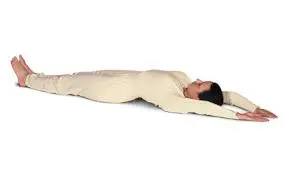
Lying Abdominal Streching
- Place yourself on your back.
- Cover your head with your arms.
- Lean your pelvis to the front.
- Make a lower back arch.
- Raise your stomach and chest.
- For thirty seconds, maintain this posture.
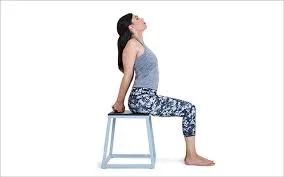
Chair Extension
- Take a seat in a chair.
- Press your back against the chair’s back.
- Your hands should be behind your head.
- Back, arch.
- Don’t forget to extend your stomach and chest.
- For thirty seconds, maintain this posture.
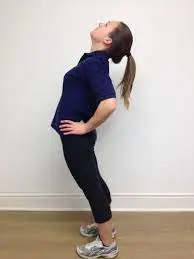
Standing Ab Stretch
- Stand up straight.
- Put your hands behind your waist.
- Push your hips forward.
- Lean backward and Push your stomach outward.
- Maintain this posture for thirty seconds.
Ball Strech
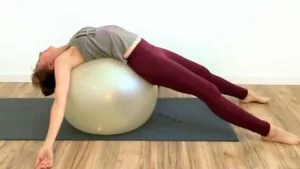
- This stretch requires a fitness ball.
- Sit on a fitness ball.
- Support your feet against a wall.
- Lie face up on the exercise ball.
- Position your arms over your head.
- Rest your body as much as possible.
- Push your abdomen outward.
- Hold this posture for thirty seconds.
Cobra pose.
- Lie on your stomach.
- Keep your hands in front of you.
- Extend your arms and arch backward.
- Try to keep your belly button in touch with the floor.
- Aim to feel a stretch in your upper abdominal region.
- Hold this posture for thirty seconds.
Lower Abdominal Stretching
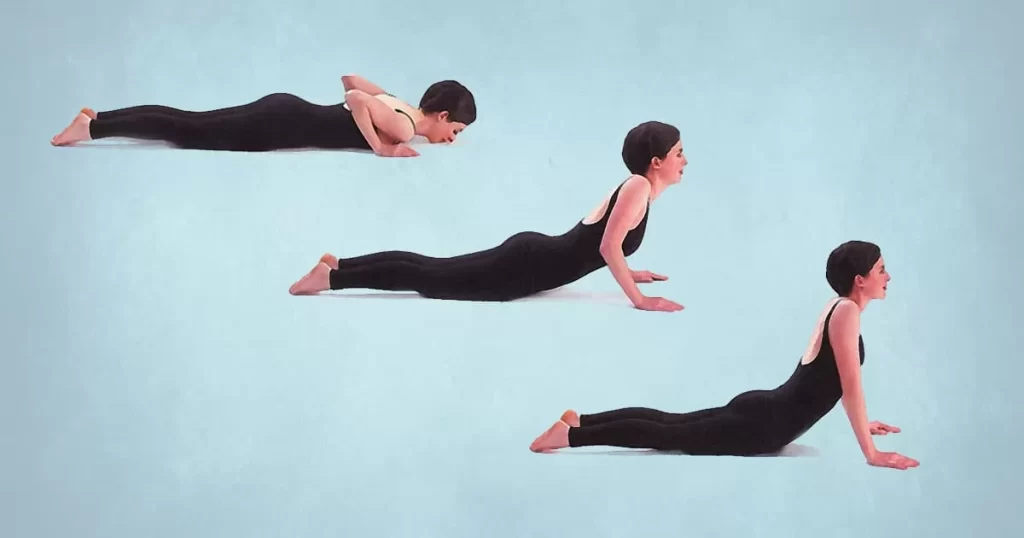
- Lie on your stomach.
- Place your hands right below your shoulders.
- Stretch your arms.
- Bend your spine backward.
- Push your stomach to the floor.
- Press your hips against the floor.
- Try to feel a stretch in the lower abdomen area.
- Maintain this posture for thirty seconds.
Internal Oblique Stretching
- You are lying on your stomach.
- Put your hands below your shoulders.
- Extend your arms.
- Bend backward.
- Throughout this stretch, push your tummy towards the floor.
- Turn your body away from the side you want to stretch.
- Maintain this posture for thirty seconds.
External oblique Stretching
- Lying on the floor.
- Cross your leg over your body and towards the opposing side.
- Spread your arms on the surface of the floor.
- Stretch your stomach.
- Maintain this posture for 30 seconds.
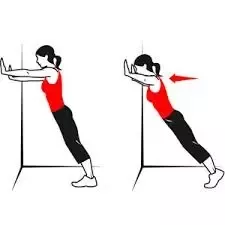
Wall Leaning
- Put your hands high up against a wall.
- Keep your feet away from the wall.
- Pull your hips backward.
- Lift your pelvis forward.
- Press your abdomen forward.
- keep for 30 seconds.

Bow Pose
- Lie on your stomach.
- Flex both knees.
- Hold both ankles with your hands.
- Bend your body backward, using your ankles as a center of power.
- keep for 30 seconds.
When to consult a Doctor?
If you see any of the following symptoms, get medical attention straight once.
- Rapid and severe pain: If your pain starts abruptly and gets worse quickly, it may indicate a more serious issue such as internal bleeding, appendicitis, or hernia.
- Severe nausea or vomiting: If vomiting is ongoing and doesn’t go away, especially if it’s bloody, there may be several underlying medical issues at play.
- Bleeding from the bowels: Black or bloody stools, or melena, are signs of internal bleeding and need to be treated very away.
- Fever: Fever that is accompanied by pain in the abdomen indicates an infection or inflammation and calls for medical attention.
- Breathing difficulties along with stomach pain may indicate a potentially dangerous illness called a pulmonary embolism, which calls for emergency medical attention right away.
- Extreme tenderness: You should see a doctor if your stomach feels very sensitive to the touch, even if it’s just a little sore. This could be a sign of internal damage or an infection.
- Abdominal swelling: This condition has to be checked out by a doctor because it may indicate interior issues including organ enlargement or hepatitis.
- More than a few days of pain: Although some soreness at first may be typical, pain that does not go away after a few days of rest and self-care may be a sign of a strain, tear, or underlying medical condition.
- Pain that makes it difficult to carry out daily tasks: See a doctor to rule out more serious causes if your pain makes it difficult for you to walk, get dressed, or work.
- Indications of a hernia: It’s important to get checked out by a doctor if you feel like you have a lump or bulge in your abdomen, especially when you cough or strain.
- Additional concerning symptoms: A visit to the doctor is necessary if there are any other concerning symptoms, such as unexplained weight loss, changes in bowel habits, or urinary issues along with aching stomach muscles.
Prevention for the Stomach Muscle Soreness
Here are a few suggestions for avoiding soreness in the stomach muscles:
- Properly warm up and cool down: Spend five to ten minutes warming up your muscles with modest aerobic and dynamic stretches before beginning any rigorous activity, especially ab-focused workouts. Static stretches are a good way to help your muscles cool down and avoid getting too tense after a workout.
- Pay attention to your body: In particular, if you’re attempting a new workout plan or are new to exercising, try not to push yourself too hard. Start slowly and build up to longer and more intense workouts over time.
- Be mindful of your form: Having good form is crucial to avoiding injuries. Seek advice from a licensed physical therapist or personal trainer if you’re unsure how to perform an activity correctly.
- Remain hydrated: Water consumption throughout the day, including before, during, and after exercise, promotes healthy muscular function and speeds up the healing process.
- Nourish your body: Consume a diet rich in fruits, vegetables, whole grains, and protein to provide your muscles with the nutrition they require for self-repair and rebuilding.
- Get enough sleep: Your body rebuilds and restores its tissues, including your muscles, while you sleep. Grab seven to eight hours of sleep each night.
- Regular stretching: stretching can help your abdominal muscles become more flexible and less prone to soreness, even if you’re not exercising.
- Think of substitute workouts: Consider doing low-impact workouts like Pilates, yoga, or swimming if you frequently get stiffness in your stomach muscles.
- Use a foam roller: After working out, using a foam roller to roll out your stomach muscles will help break down muscular tissue and reduce inflammation.
- Wearing supportive clothes: When exercising, wearing an appropriate abdominal support belt or brace can assist lessen the strain on your stomach muscles.
FAQs
What causes stomach muscle soreness?
Abdominal muscular strains, often known as strained stomach muscles, are common overuse injuries. It happens when the muscles in your stomach strain or rip. Football and tennis players are particularly susceptible to this ailment. However, anyone may strain the abdominal muscles
How can you treat stomach muscle soreness?
Apply a hot water bottle or warm wheat bag to your belly.
Soak in a warm bath
Drink lots of clear fluids, including water.
Reduce your intake of caffeine, tea, and alcohol, as these might exacerbate the discomfort.
Should I rest my abs if they feel sore?
It is typically suggested that you give your muscles time to rest and heal before resuming hard activity. Working exercise when your muscles are still painful increases the chance of injury and slows the healing process.
What should you do if you have a sore stomach after exercising?
Hot compress Applying heat to the belly is an excellent way to relieve abdominal muscular discomfort; use a warm cloth or a heat pack. This treatment will boost blood flow to the sore location, hastening the recovery of muscle tissue and the abdomen.
What is the best medication for muscular soreness?
Simple pain medicines, such as paracetamol, can help to alleviate muscular soreness. Anti-inflammatory medications, such as aspirin and ibuprofen, can help alleviate muscular discomfort by lowering inflammation.
References
- Physiocheck.co.uk. (n.d.). Pain in the abdominal muscles | Physio Check. https://www.physiocheck.co.uk/condition/75/pain-in-the-abdominal-muscles
- Cronkleton, E. (2023a, May 5). Everything you need to know about abdominal strain. Healthline. https://www.healthline.com/health/abdominal-strain
- Abdominal pain. (2023, July 15). Mayo Clinic. https://www.mayoclinic.org/symptoms/abdominal-pain/basics/causes/sym-20050728
- Mark. (2023, May 28). 11 Abdominal stretches to reduce tightness. Posture Direct. https://www.posturedirect.com/abdominal-stretches/
- Abdominal muscles. (n.d.). Physiopedia. https://www.physio-pedia.com/Abdominal_Muscles
- Professional, C. C. M. (n.d.-a). Abdominal muscles. Cleveland Clinic. https://my.clevelandclinic.org/health/body/21755-abdominal-muscles


